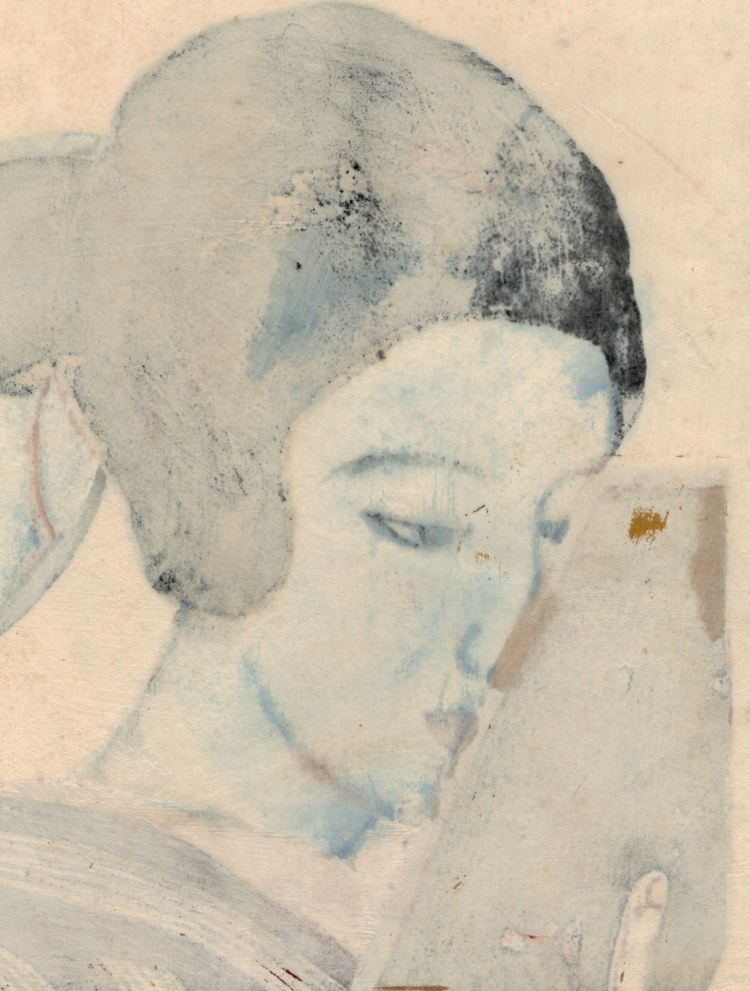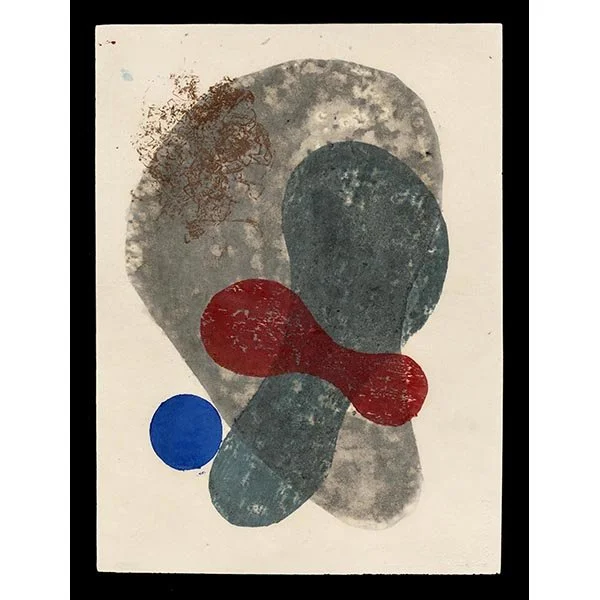Details
This design from 1929 is a representational figurative work Koshiro Onchi produced to gain greater acceptance of the Sosaku Hanga movement, as abstraction, his preferred mode of working, was not widely accepted in Japan during this time. Though Onchi was more interested in abstraction, this design suggests otherwise. Featured in this design is a modern woman looking down at a mirror while someone assists her with another mirror, revealing the nape of her neck and exposing her short hair. The bob hairstyle shown here was the desired hairstyle for moga (shortened from modan garu, or modern girl). It is interesting to note that some moga did not actually cut their hair, instead fashioning their long hair into a knot at the nape of their neck to mimic the bob. Given that, Onchi’s focus on the subject’s short haircut through the mirror displays the conviction of her modernity.
Connoisseur's Note
Onchi did not believe in producing unified printed work; he saw printmaking as a creative process, not a mode of duplication, with each printing as an opportunity to express his emotional state at the moment of creation. Given that, this impression is nonetheless a rare variant with an additional blueish-green under printing, just below the white pigment on the woman’s face. It is most noticeable from the reverse as the image below illustrates. This style of pigmentation is highly unusual, even experimental for this time in Japan, and adds a psychological complexity to the design.
This print belongs to a series, which Onchi never completed—only realizing four designs of the eight. There were plans for a larger second edition executed by a professional publisher but this edition was never produced. Apparently all examples of this design were self-printed by Onchi himself.
More prints by Koshiro Onchi:








